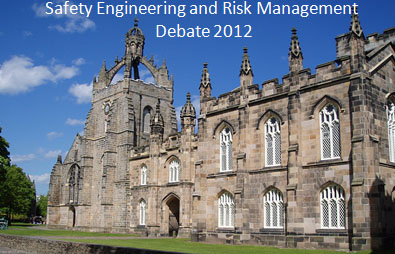Materials such as sedimentary rocks, pharmaceutical tablets, plastic bonded explosives, biscuits, concretes, nacre, solid propellants, seashells and asphalts can be treated as particulate composites that consist of particles of high volume fraction, matrixes of thin layer and interfaces of high specific surface area. Mechanical behaviour of highly packed particulate composites is the theme of this issue of Journal Club forum.

1. Sedimentary rocks, covering almost the entire ocean floor and about three-quarters of the Earth's land area, are made of sediments cemented or compacted together by a particular force or process over time. Damaged sedimentary rocks, such as those during oil and gas extraction or subsea oil spilling, may cause manmade earthquake. On the other side, studies on the behaviour of sedimentary rocks can bring benefits to petroleum industry such as in improving the drilling efficiency. Behaviour of sedimentary rocks are important in many fields of earth sciences, partly because they relate to the sudden rock failure that contributes to earthquakes, and partly because they forms permeable paths for fluid flow in fault zones (Gudmundsson et al., in press)
2. For pulsatile drug delivery, an osmotic tablet consists of a medical core surrounded by a coating made of a material that is water-insoluble but permeable. The pressure build-up in the core pushes the coating for drug release (Rahemba et al., 2009). For a coating made of particulate composites, the percolation of interfaces can provide a controllable way for drug delivery.
3. Energetic materials such as plastic bonded explosives and solid rocket propellants consist of particles of high volume fraction embedded in a polymeric binder. During slow loading, crack propagation is mainly along interfaces, particles are not fractured rather the crack deviates over or under them. Burning occurs on the pressured surface, the network of debonded interfaces allows hot gas access to increased internal surface area and thereby increases the burning rates, which further accelerate the debonding. The network close to the surface triggers the burn--to-violent-reaction (BVR) transition (Gould et al., 2009).
4. In many structured food applications, mixed biopolymer gels are utilised that exhibit typical emulsion-like phase-separated microstructures, which include spherical particles of one phase (e.g. maltodextrin) within a continuous matrix of the second (e.g. gelatin). One of the greatest challenges in the food industries is to develop products that can fracture in a pre-designed way so that they can provide the required function (Brink et al., 2007).
5. A concrete is made of a cement matrix that bonds particles of different size (gravels and sands) and fills the interstitial space. Sudden debonding and networking of interfaces causes the brittle weakness; chemical and nuclear plants can be at risk from earthquake since the protecting concrete structures can be vulnerable.
6. Nacre, produced by some molluscs as an inner shell layer and known as the “mother of pearl”, consists of about 95% (weight) inorganic aragonite platelets and a few percent of organic biopolymer, forming a brick-and-mortar like network; when under attack the network reorganize to spread out the energy of the blow across the shell layer. Further, aragonite platelets are also particulate composite materials consists of nanograins and biopolymer binder, as discovered in an Atomic Force Microscope observation (Li and Huang, 2009). This two-scale (micro-nanoscale) ceramic/polymer composite material is of an extraordinary beauty, very strong and resilient.
References:
Gudmundsson A, Simmenes TH, Larsen B, Philipp SL (in press) Effects of internal structure and local stresses on fracture propagation, deflection, and arrest in fault zones. J. Struct. Geol.
Rahemba TR, Bell S, Connolly EK, Waterman KC (2009) Use of scoring to induce reproducible drug delivery from osmotic pulsatile tablets. Pharm. Dev. Technol. 14:548–555.
Brink J, Langton M, Stading M, Hermansson AM (2007) Simultaneous analysis of the structural and mechanical changes during large deformation of whey protein isolate/gelatin gels at the macro and micro levels. Food Hydrocolloids 21:409–419.
Gould PJ, Porter D, Cullis IG (2009) Predicting the damage/failure transition in polymer-bonded explosives. Proceedings of the 9th International Conference on Mechanical and Physical Behaviour of Materials under High Rate Loading, DYMAT 2009, EDP Sciences, pp. 1629-1633.
Li X, Huang Z (2009) Unveiling the Formation Mechanism of Pseudo-Single-Crystal Aragonite Platelets in Nacre, Phys Rev Lett, 102, 075502.
